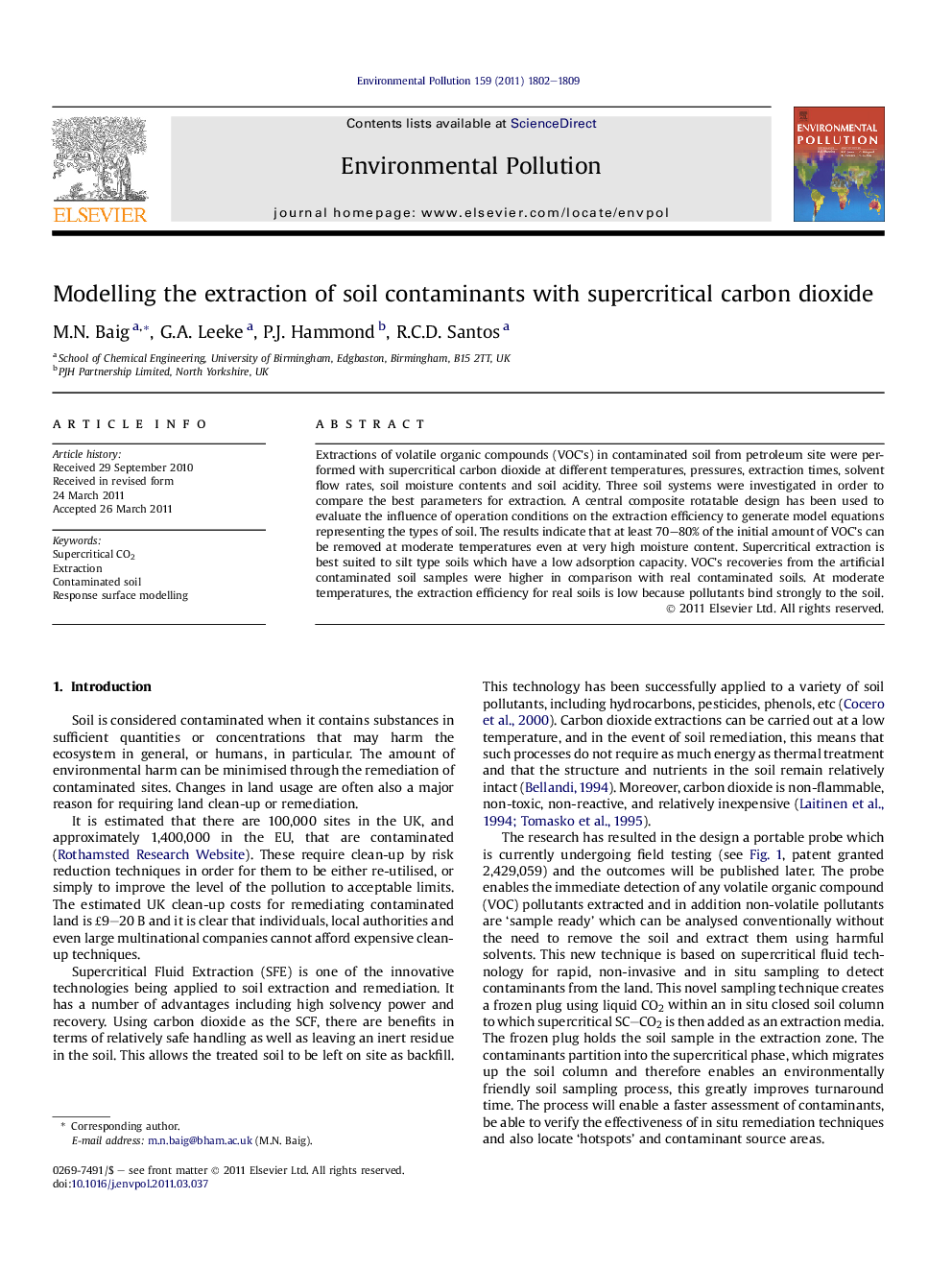| Article ID | Journal | Published Year | Pages | File Type |
|---|---|---|---|---|
| 4425301 | Environmental Pollution | 2011 | 8 Pages |
Extractions of volatile organic compounds (VOC’s) in contaminated soil from petroleum site were performed with supercritical carbon dioxide at different temperatures, pressures, extraction times, solvent flow rates, soil moisture contents and soil acidity. Three soil systems were investigated in order to compare the best parameters for extraction. A central composite rotatable design has been used to evaluate the influence of operation conditions on the extraction efficiency to generate model equations representing the types of soil. The results indicate that at least 70–80% of the initial amount of VOC’s can be removed at moderate temperatures even at very high moisture content. Supercritical extraction is best suited to silt type soils which have a low adsorption capacity. VOC’s recoveries from the artificial contaminated soil samples were higher in comparison with real contaminated soils. At moderate temperatures, the extraction efficiency for real soils is low because pollutants bind strongly to the soil.
► The proposed manuscript highlights the issue of contaminated land remediation and control technology. ► The technology used is non-invasive, environmentally friendly and is contributing to hazardous waste minimisation. ► This technology will greatly speed up contaminated land analysis and risk assessment.
